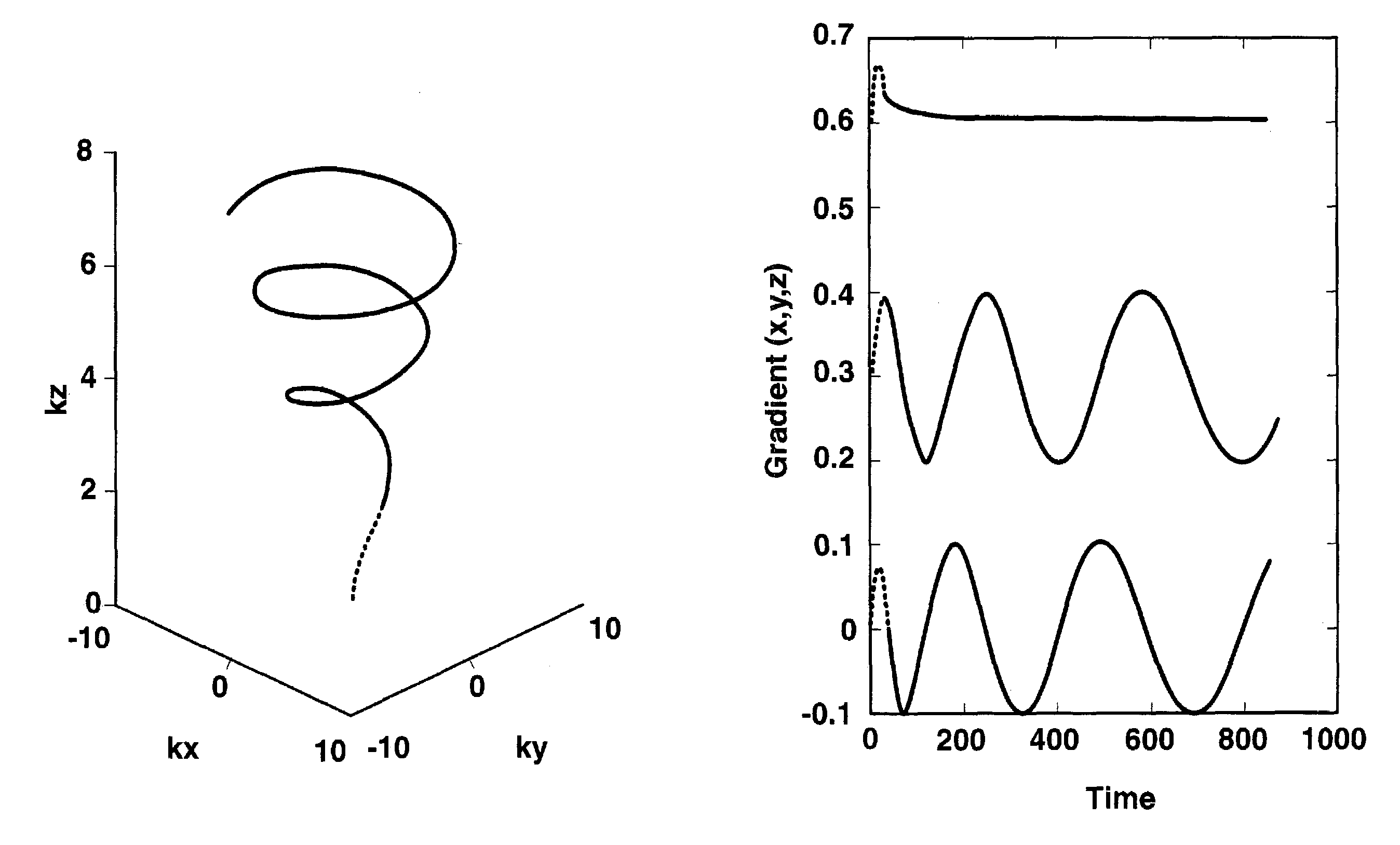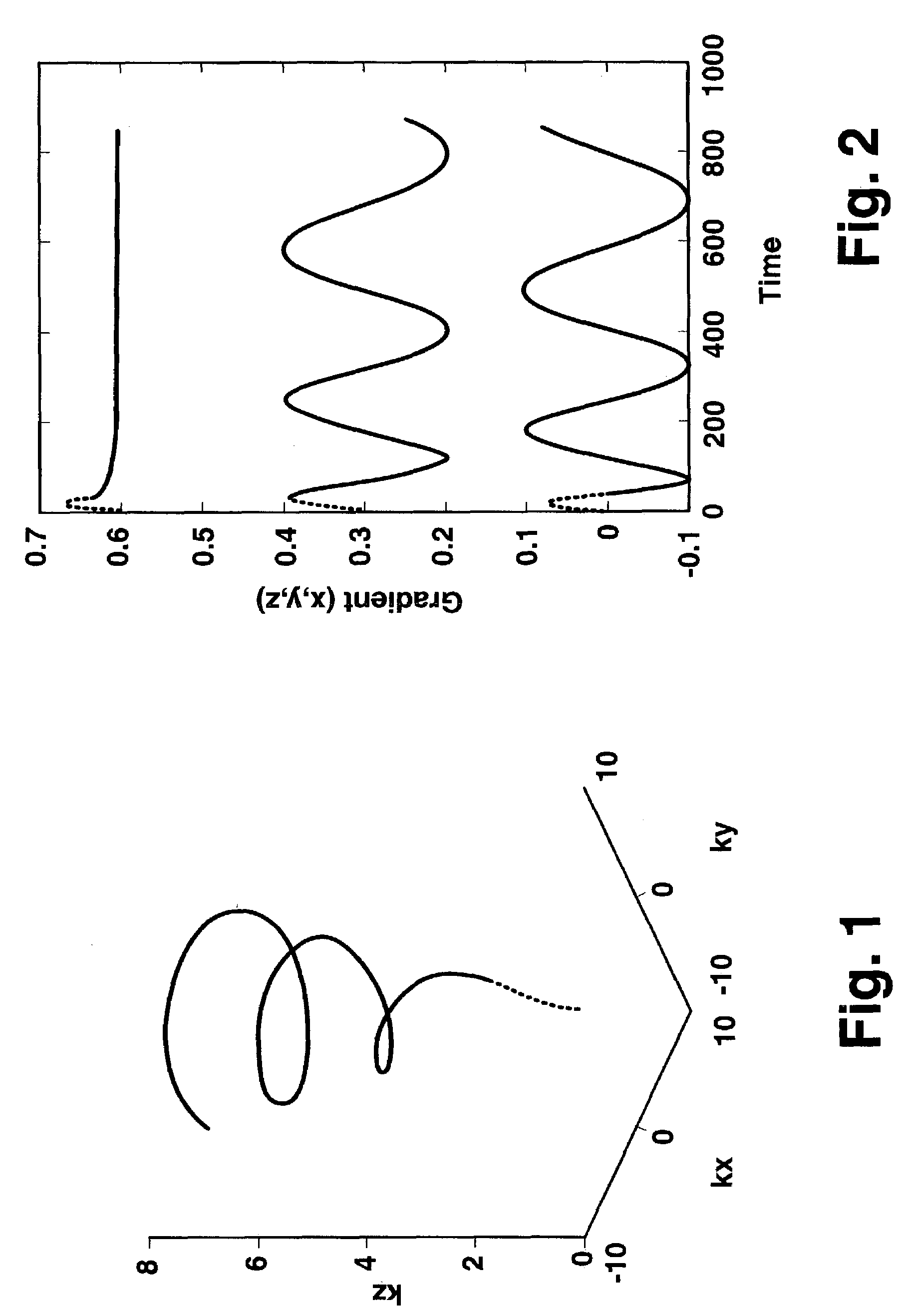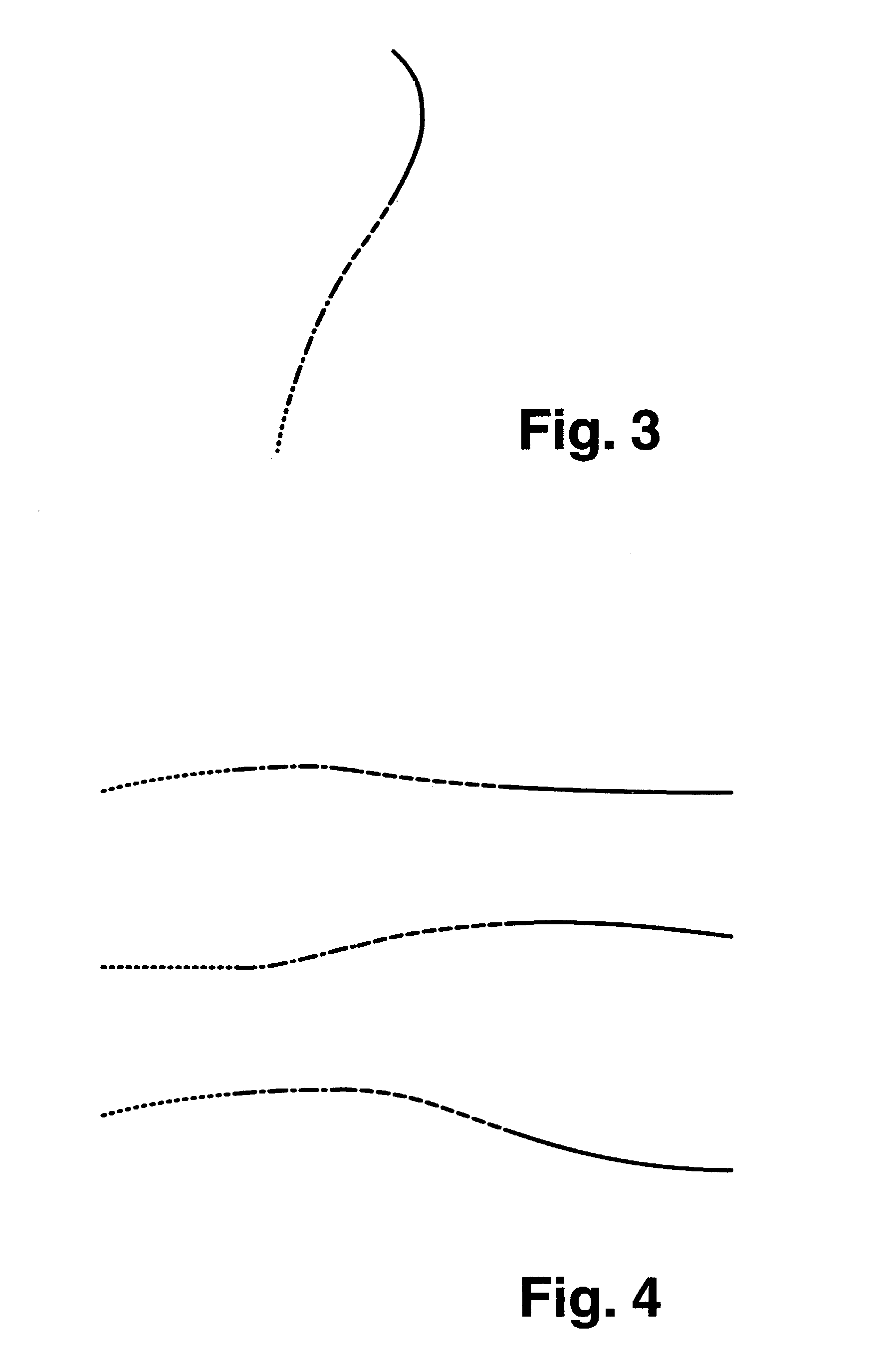Computer readable magnetic resonance method calculating on-line gradients during imaging
a magnetic resonance and gradient technology, applied in the field of magnetic resonance imaging, can solve the problems of gradient echo methods, inefficient k-space sampling strategies of early pi methods, limited application of sodium mri in diagnostic radiology and clinical research, etc., and achieve good signal-to-noise ratio, good sampling of k-space, and easy imaging
- Summary
- Abstract
- Description
- Claims
- Application Information
AI Technical Summary
Benefits of technology
Problems solved by technology
Method used
Image
Examples
Embodiment Construction
[0017]One solution to the mathematical condition that allows the constant sampling of k-space represent “twisted spiral” trajectories, similar (but not consistent with) those reported by Boada et al (1997).9 This solution can be expressed in polar coordinates by
[0018]ki=(3γGk02t+k03)1 / 3(1.1)ϕi=12sinθ0(((ki / k0)4-1)-tan-1((ki / k0)4-1))+ϕ0(1.2)
where k is the spatial frequency vector (equivalent to the radius of the trajectory), γ is the gyromagnetic ratio of the imaged nucleus (23Na), G is the maximum gradient strength, and φ and θ0 are the azimuthal and polar angles, respectively. k0 is the approximate position where the k-space trajectory evolves according to equations 1.1–1.2 and is given by
k0=2Δxp (1.3)
where Δx and p denote the desired spatial resolution and trajectory twist, respectively.
[0019]Equations 1.1–1.3 can be used to develop the Uniform Sampling Density (USD) sequence. The k-space trajectories associated with this scheme can be divided into four discrete stag...
PUM
 Login to View More
Login to View More Abstract
Description
Claims
Application Information
 Login to View More
Login to View More - R&D
- Intellectual Property
- Life Sciences
- Materials
- Tech Scout
- Unparalleled Data Quality
- Higher Quality Content
- 60% Fewer Hallucinations
Browse by: Latest US Patents, China's latest patents, Technical Efficacy Thesaurus, Application Domain, Technology Topic, Popular Technical Reports.
© 2025 PatSnap. All rights reserved.Legal|Privacy policy|Modern Slavery Act Transparency Statement|Sitemap|About US| Contact US: help@patsnap.com



